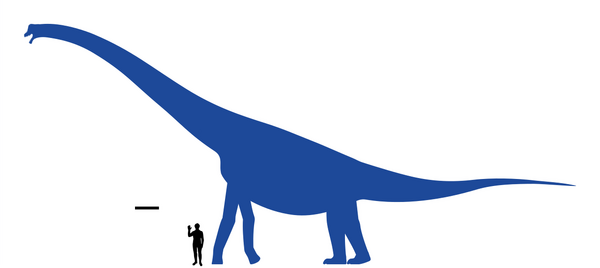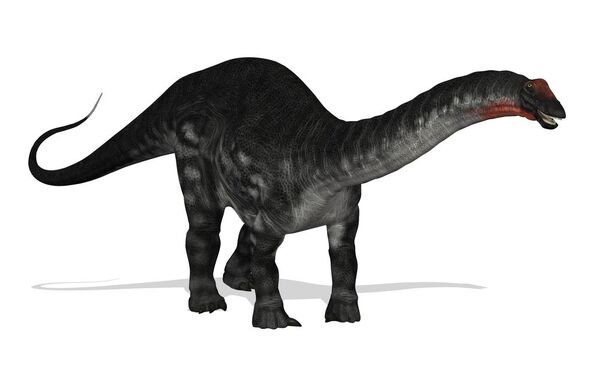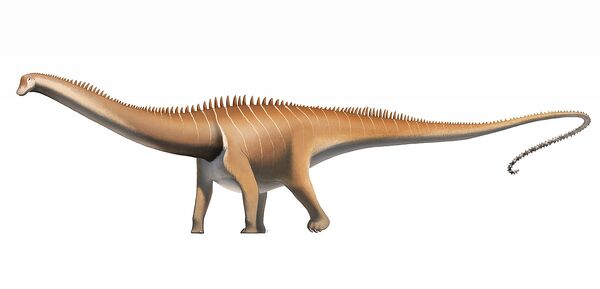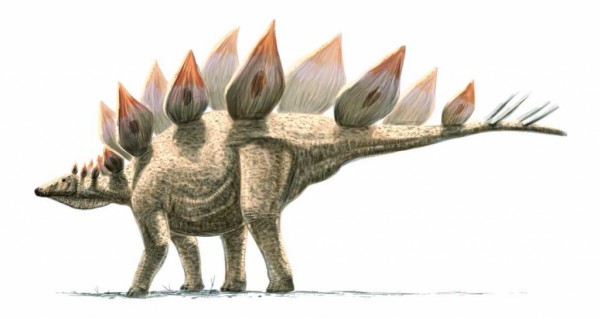Big thanks to Dinosaur action, The Alizarr, and Therapod king for helping create this list.
The Morrison Formation is a Late Jurassic rock formation that lies under much of the Western United States. Not all of it is exposed, but that which is has produced more dinosaur fossils than any other formation in North America. As such, it contains a wealth of iconic dinosaurs, along with other, more recent, but still significant discoveries. Here is a list of the top ten dinosaurs of the Morrison Formation.
| 10th - Nanosaurus |
|---|

|
|
Nanosaurus was a small plant-eating Ornithopod. Genera such as Drinker, Othnielia, and Othnielosaurus, might be familiar to more people than Nanosaurus, but they are now considered to be Nanosaurus synonyms. This was the result of a long taxonomic debate, which is what Nanosaurus is most known for today. Small, fast Ornithopod herbivores like Nanosaurus were probably a fairly common sight in Late Jurassic North America. |
| 9th - Ornitholestes |

|
| Ornitholestes was a small theropod carnivore. While it is only known from partial remains, it was the first dinosaur to be named in the 20th century. As such, its remains have been examined fairly extensively. It is known for its proportionally large eyes, and speculation has been made that it was a nocturnal hunter. |
| 8th - Hesperornithoides |

|
| Hesperornithoides is the most recently named dinosaur on this list. It was described and named in 2019. Hesperornithoides was a small troodontid, only growing to around a meter in length. It, however, is significant for the role it plays in the "temporal paradox" debate. Most paleontologists agree that birds evolved from dinosaurs. However, the apparent problem, which has become known as the "temporal paradox," is the fact that most bird-like dinosaurs, such as Sinornithoides, did not appear until the Cretaceous, whereas the earliest avian dinosaurs appeared in the Jurassic. However, discoveries like Hesperornithoides show that bird-like dinosaurs existed during the Jurassic, further proving the relationship between modern birds and dinosaurs. |
| 7th - Brachiosaurus |

|
| Brachiosaurus is one of the most famous Sauropod dinosaurs. It is known for its long, somewhat vertical neck and forelimbs which are longer than its hind limbs. With this posture, it was probably a high browser, which would allow it to avoid competition with medium-level browsers such as Diplodocus. |
| 6th - Camptosaurus |

|
| Like the aforementioned Nanosaurus, Camptosaurus was an Ornithopod. However, Camptosaurus was much larger, growing to around five meters in length. It seems to have been an earlier relative of later Hadrosaurs like Edmontosaurus and Iguanodonts like Iguanodon. It is reasonable that these large Ornithopods might have also been prey for large predators such as Allosaurus. |
| 5th - Apatosaurus |

|
|
Apatosaurus was one of the oldest Diplodocid Sauropods, the family that includes the famous Diplodocus. Apatosaurus seems to have been shorter, but more robust. As such, Apatosaurus was quite massive. Most modern mass estimates exceed 20,000 kg, and it is common for estimates to exceed 30,000 kg. Apatosaurus is also well known for the debate surrounding the validity of Brontosaurus . For more than a hundred years, that famous Sauropod was considered to be a species of Apatosaurus. While a study from 2015 suggests the two were indeed different, not all paleontologists are convinced by this research. |
| 4th - Ceratosaurus |

|
| Ceratosaurus is an iconic predatory dinosaur. It is well known for a horn that was positioned toward the end of its snout as well as horn-like ridges that were present above its eyes. While Ceratosaurus was large, it was not an apex predator, having to coexist with the likes of Torvosaurus and Allosaurus. It has been suggested that these genera were in direct competition with each other due to their similarities. In sites where Allosaurus and Ceratosaurus occur together, Allosaurus specimens tend to outnumber those of Ceratosaurus by a ratio of 7.5:1. This has suggested to some researchers that Ceratosaurus had a different diet. Some of its features seem to suggest it spent more time around water, possibly feeding on prey like crocodiles or lungfish. It also might have fed on dinosaur carcasses at times. Many paleontologists do not believe Ceratosaurus to have been fully semi aquatic, however. |
| 3rd - Allosaurus |

|
|
Allosaurus is one of the most famous predatory dinosaurs, and has appeared in countless dinosaur-related media. It is also the most common large predator from the Morrison Formation. Allosaurus was an apex predator. It probably fed primarily on Ornithopods, Stegosaurs, and small Sauropods. While it would have coexisted with other large predators such as the aforementioned Ceratosaurus and Torvosaurus, it seems to have been fairly successful, given how common Allosaurus fossils are in comparison to those other two genera. Many other large predatory dinosaurs of the Late Jurassic seem to have shared the basic body plan of Allosaurus, including the large predator Saurophaganax. Due to these similarities, some have suggested that these related genera represent different Allosaurus species, or perhaps even unusually large individual Allosaurus. |
| 2nd -Diplodocus |

|
| Numerous specimens of Diplodocus individuals have been found, allowing researchers to piece together the entire animal with an incredible degree of completeness. For a long time, Diplodocus was considered to be the longest dinosaur represented by reasonably complete material, a title that, some would argue, it has not lost even today. Diplodocus is also quite famous as, for much of the 20th century, it was commonly cited as being the largest dinosaur, although, some genera like Apatosaurus or Brachiosaurus which were known at that point were most likely more massive. |
| 1st - Stegosaurus |

|
|
Stegosaurus is the largest Stegosaur currently known, growing to around nine meters in length. Extensive research has been conducted on its iconic plates, but the purpose of these is still not known. Modern reconstructions are able to position them correctly, however. Stegosaurus also possessed spikes, or "thagomizers," on the end of its tail. These seem to have been used for defense as an Allosaurus specimen was found with a thagomizer embedded in it. The head of Stegosaurus was positioned relatively low, although, not as low as previously assumed, meaning that it was probably a low-level browser. Stegosaurus is one of a very small group of dinosaurs, including Triceratops and Tyrannosaurus, that are truly well known by the general public. It is featured extremely often in dinosaur-related books, toys, documentaries, and films. |
Honorable mention
Saurophaganax - A relative of Allosaurus that could grow to around 12 meters long. It was also recommended for first place by a contributor. However, some paleontologists question the validity of this genus, meaning that it did not make the final list.